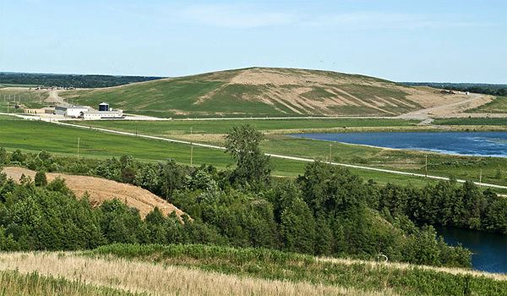Inheritors of the title
Since part of our pitch about the enormity of the Freshkills Park site is that Fresh Kills was the world’s largest landfill during its operating peak, we’re often asked what holds that distinction today. Business Week runs down a worldwide list of landfills and garbage dumps (the latter connoting a lack of environmental controls and/or regulations); Waste & Recycling News has published a list of the US top ten landfills by annual tonnage (an equally interesting resource is their listing by state). The biggest of this whole lot is, of course, the Great Pacific Garbage Patch, the unregulated mass of waste floating in the North Pacific Gyre at 1-2 times the size of Texas. The question of which site qualifies as the largest land-based landfill worldwide is still open for some debate. The largest in the US is now either Puente Hills in Los Angeles County or Apex Regional Landfill in Las Vegas.
Important to note from the Business Week list that many of the largest landfills around the world now capture and use landfill gas for energy, reducing the environmental and public health impact of escaping methane and carbon dioxide. The landfill gas collection system at Fresh Kills, a forerunner of this practice, collects about 10 million cubic feet of landfill gas daily.





